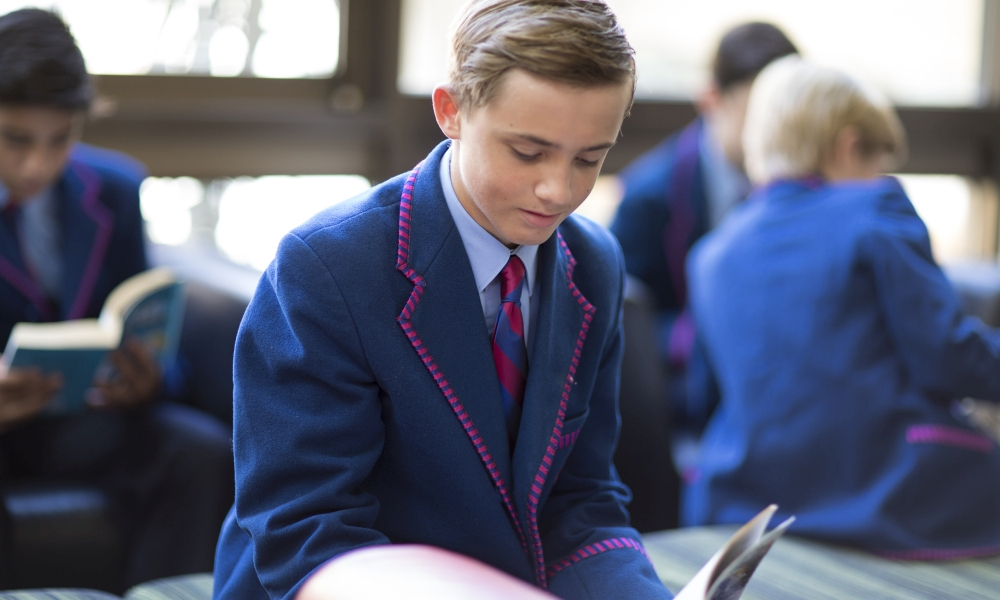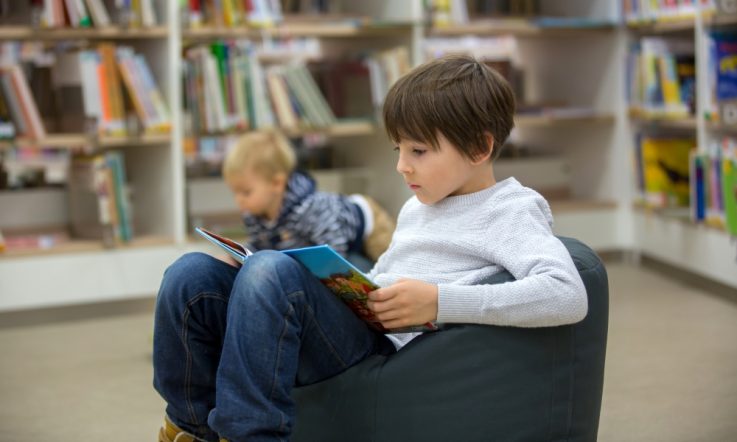At a boys' secondary school in New South Wales, an annual student reading survey revealed many students say they don't like reading because ‘reading is something girls do'. Linda Roden, Head of Library at St Joseph's College in Hunters Hill, knew she needed to come up with some initiatives to change these attitudes and engage students in reading.
‘We are very fortunate to have a beautiful library, which is centrally located, well-resourced and is the hub of the school,' Roden says. ‘We aim to provide a warm, welcoming and safe environment in which students are able to engage in homework, research, study and quiet reading.'
Each year, the library send out a link to an online survey via email to students. The college has a student population of approximately 1100, and the response rate to the library's survey sits at around 500. Roden says the survey has been going for about eight years and helps to see how student attitudes and interests are changing, which can inform the initiatives and activities they implement.
‘Books & Blokes' Breakfast
‘The idea for the “Books & Blokes” series came about after analysing the results of a student reading survey in 2012,' Roden explains. ‘In this survey, over 30 per cent of boys who identified as being non-readers, or disengaged readers, nominated “reading is something girls do” as a response to explain why they did not like to read. We were concerned about this and began to brainstorm and research initiatives that we could implement to send the message that men read and value reading.'
Roden came across a similar program being run at a boys' school in Victoria and so rang the Head of Library there to see how the event was run before adapting it for their school setting. Now, each instalment of the breakfast at St Joseph's College involves 200-300 attendees sitting down to a casual breakfast while they hear men speak about the books they've written.
They've hosted authors Stan Grant, Glen McGrath, Adam Spencer and Dr Karl Kruszelnicki, among many others. They attract speakers through the College's network and by building relationships with publishing companies. Roden says it was initially a lot of work securing speakers, however they are now the ones regularly being contacted to host author guests.
Pop-up libraries
Pop-up libraries are also a feature at the school. They've been placed in the staffroom and in the playground in order to attract the most attention from both staff and students.
‘The staffroom pop-up targeted time-poor teachers who are under time pressure at the end of the year,' Roden explains. ‘By taking the library to the staffroom, we are making our collection more visible and making it easier for staff to borrow.'
A range of popular books, as well as new releases and cookbooks, are chosen for this pop-up. Popular titles are also chosen for the playground pop-up library, which is placed in this location because it's highly visible for students and has a high level of foot traffic.
Teachers also have the opportunity to utilise the library's ‘Book Butler' service – staff are emailed brochures with popular and new release books, Roden says, and they're able to email through a request to have the book appear in their pigeon hole by the end of the day.
Increasing student reading engagement in your school setting
Roden has many suggestions for other teacher librarians looking to increase reading engagement in their own schools.
Photocopying a class set of the first chapter of a book and reading it aloud to a class of students has had particular success with disengaged readers, she says. Classes at the College are timetabled to have time in the library, so this activity fits in well with this time.
They also run a peer reading program which Roden suggests other educators should consider. Students in Year 11 are buddied up with students in Year 7 and 8 who have been identified as needing support with reading and the boys read together in the library before school, two days per week.
‘One of the most successful initiatives was to invest in multiple copies of popular titles,' she says. ‘We have up to 30 copies of our most popular books and encourage boys to borrow the same book as their friends.'
Students at St Joseph’s College are invited to complete a survey each year on their reading habits. At your school, are you measuring the reading engagement of students? If so, how does this information inform your next steps in terms of implementing reading initiatives?
As a secondary school teacher, how often do you give students the opportunity to read aloud? When was the last time you read aloud to your students?



